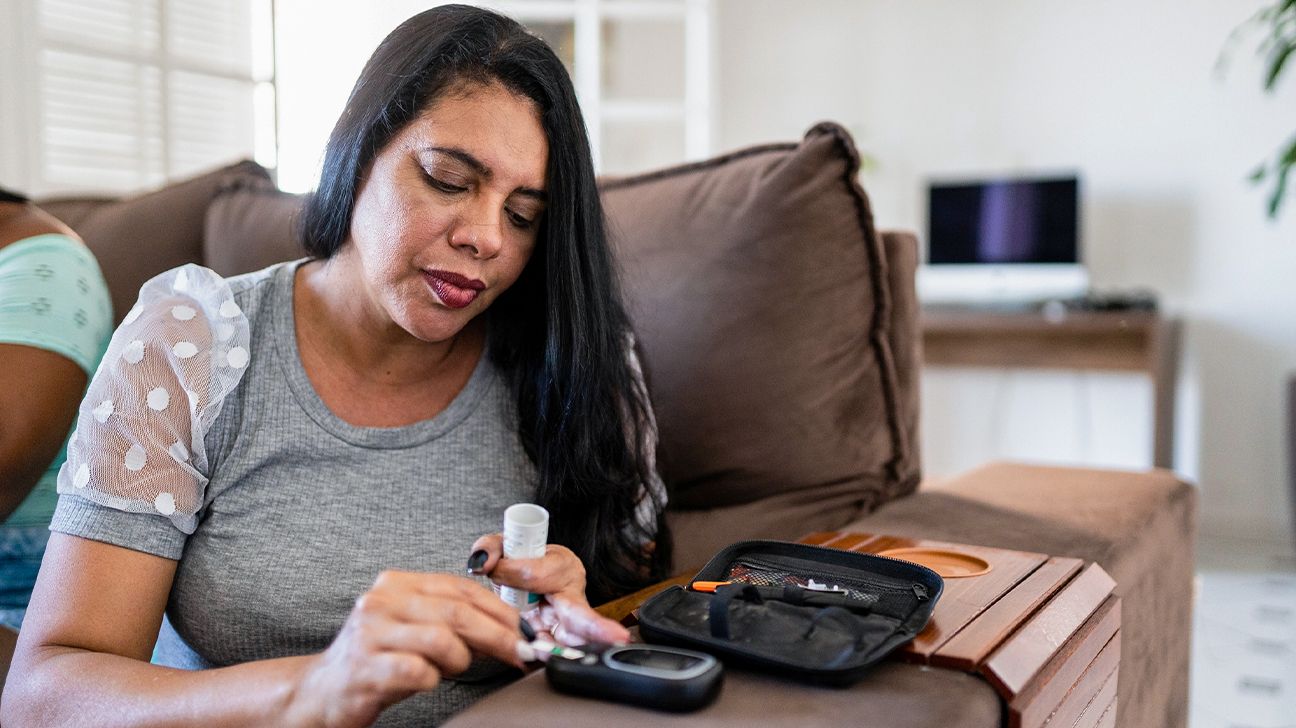People with diabetes may experience hypoglycemia due to the condition itself or its treatments. Even people who don’t have diabetes may experience hypoglycemia after taking certain medications.

Your blood sugar fluctuates throughout the day depending on the foods you eat, the activity you get, and various other factors. It may also be influenced by certain health conditions, like type 1 or type 2 diabetes. When your blood sugar level goes below
What you may not know is that certain medications may lead to this potentially life threatening condition.
Here’s more about the signs and symptoms you may experience with drug-induced hypoglycemia, why it happens, and what treatments may help.
Drug-induced hypoglycemia is low blood sugar caused by medications.
People who have diabetes may experience hypoglycemia due to their condition. The medications used to treat diabetes may also lead to low blood sugar episodes.
Medications may cause hypoglycemia by:
- stimulating insulin release
- reducing insulin clearance
- altering insulin sensitivity
- interfering with glucose metabolism
- modulating the effect of anti-diabetic medications
Medication is one of the most common causes of hypoglycemia in adults next to alcohol use.
Most cases of drug-induced hypoglycemia are caused by medications to treat diabetes, including:
- sulfonylureas
- insulin
- metformin
- alpha-glucosidase inhibitors
- thiazolidinediones
- meglitinides
- DPP-4 inhibitors
- GLP-1 receptor agonists (when combined with insulin)
- SGLT-2 inhibitors
- pramlintide
Some of these medications have a higher risk of inducing low blood sugar levels.
Specifically, the American Diabetes Association (ADA) treatment guidelines discuss both insulin and sulfonylureas as the two drugs with the highest risk of hypoglycemia on their own.
Insulin is the main glucose-lowering medication, which can often be miscalculated for dosing and has the highest risk of leading to low blood sugars. Other drug classes also have
While less common, a person may also develop hypoglycemia while taking other medications, including:
- beta-blockers
- heart arrhythmia drugs (quinine, quinidine)
- NSAIDs (particularly in large doses)
- antimalarial drugs (quinine, chloroquine, etc.)
- SSRIs (fluoxetine, sertraline)
- TCAs (doxepin, imipramine, nortriptyline)
- MAOIs (selegiline, rasagiline)
- ACE inhibitors
- certain antibiotics (gatifloxacin, levofloxacin, sulfamethoxazole-trimethoprim)
People with diabetes are the most likely to develop hypoglycemia with all these medications (diabetic drugs and otherwise). In addition, people with liver or kidney issues, older people, pregnant women, and children may be more likely to develop hypoglycemia with nondiabetic medications.
Yes. Beta-blockers may mask symptoms of hypoglycemia. Again, one of the symptoms of low blood sugar is rapid heart rate. Beta-blockers work at keeping your heart rate low, so you may not experience this warning sign.
You may only notice
Selective serotonin reuptake inhibitors (SSRIs) may also mask low blood sugar.
While hypoglycemia is most common in people with diabetes taking insulin, there are other situations where a person may experience low blood sugar.
Nondiabetic hypoglycemia is rare and may be caused by:
- eating meals or snacks high in carbohydrates
- having a history of stomach surgery or related issues
- having enzyme deficiencies
- being prediabetic
- waiting too long between meals
- taking certain medications
- binge-drinking
- having an illness that impacts the liver, heart, or kidneys
- having low levels of cortisol, thyroid hormone, or other hormones
- having a tumor, such as a tumor on the pancreas
Each individual may react to having low blood sugar in a different way. In fact, some people may have no notable symptoms to tell them their blood sugar is low (hypoglycemia unawareness).
Symptoms may include:
Up to 20% of hospital admissions for drug reactions are due to hypoglycemia. If blood sugar levels dip very low (below
You should seek immediate medical care if you experience these symptoms:
If you have diabetes and have symptoms consistent with low blood sugar, consider checking your blood sugar on your home glucose monitor.
If your reading is below
Otherwise, your doctor will do a physical exam and order blood work to determine your blood sugar level. It’s important to let your doctor know exactly what medications you’re taking, particularly if you take any that are known to lower blood sugar.
Doctors use intravenous (IV) dextrose and glucose infusions for the most severe cases of hypoglycemia.
For more mild episodes, your doctor may give you oral medication (diazoxide) and carbohydrates that can be quickly absorbed into your bloodstream (like fruit juice). Injections or other forms of fast-acting glucagon are another option for people who cannot take food by mouth.
After acute treatment, it’s important to continue monitoring your blood sugar levels while on medications. You may work with your doctor to adjust medication dosages or switch up medications depending on what works best for you and your specific health condition.
Rule of 15 for treating hypoglycemia
The ADA and many clinicians advise using what’s known as the “Rule of 15” when treating low blood sugars that are not severe enough to require emergency medical assistance.
This means eating 15 grams of quick-acting carbohydrates to increase blood sugar and then taking a glucose reading after 15 minutes. If your blood sugar remains under 70 mg/dL, then you eat another 15 grams and wait another 15 minutes before checking glucose levels.
This method is used to prevent overtreating a Low, and to help prevent blood sugars from rising too quickly.
Make an appointment with your doctor if you have concerns about certain medications and drug-induced hypoglycemia. Even if you don’t have diabetes, there are some situations where you may be likely to develop this potentially life threatening complication.
Remember: Low blood sugar doesn’t cause symptoms in all cases. Regardless, hypoglycemia may lead to seizures, brain damage, or death. Prompt treatment can improve your outcome.
